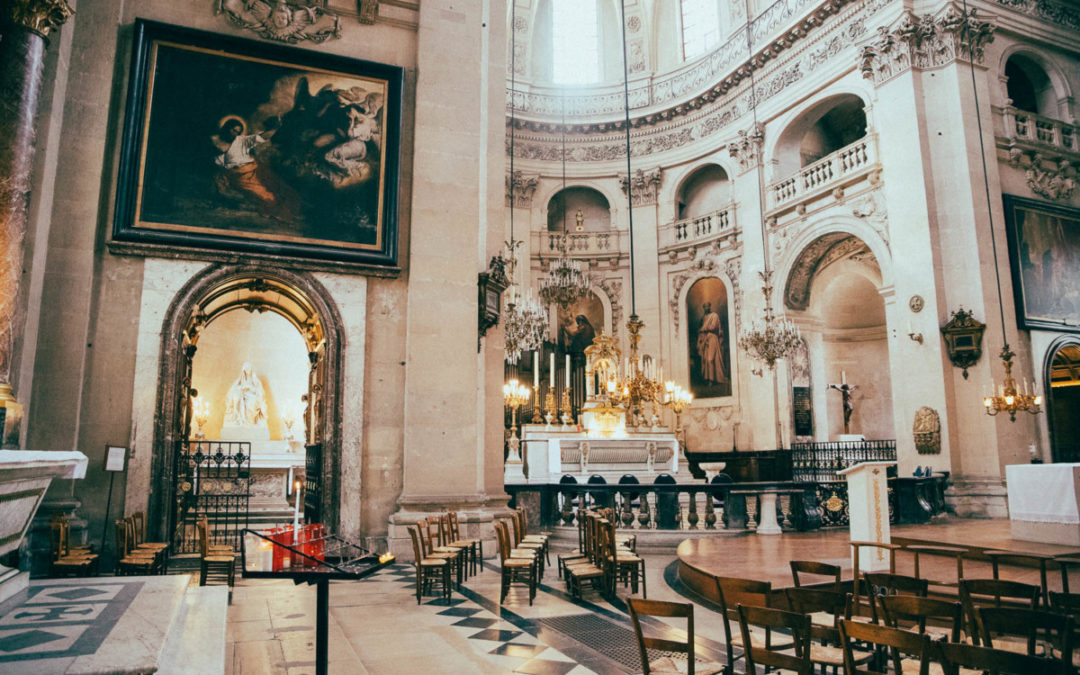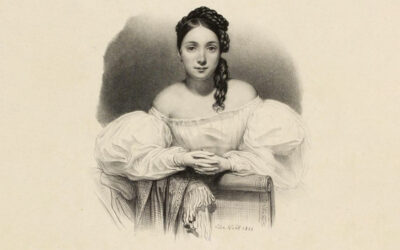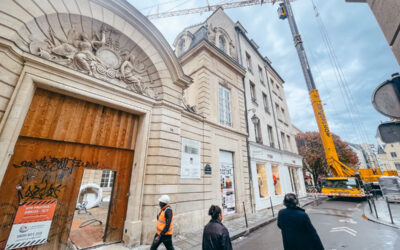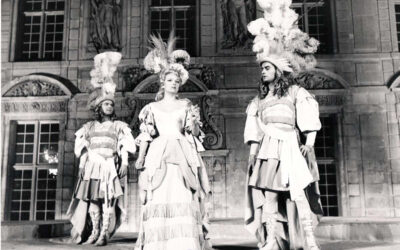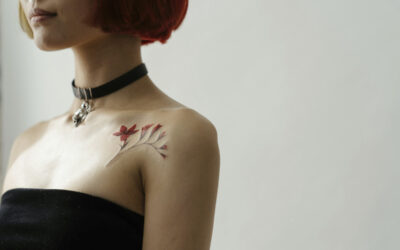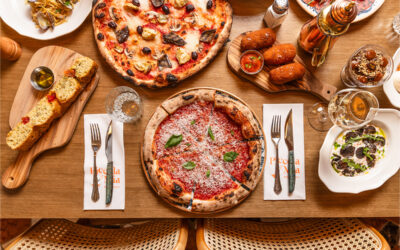A Jesuit foundation, the Saint-Louis church (today Saint-Paul-Saint-Louis) was built in the XNUMXth century.
The “Company of Jesus”, founded by Saint Ignatius of Loyola in 1539, settled in Paris in the middle of the century, near the Montagne-Sainte-Geneviève, then here, in 1580.
Initially, there was little in this place other than a “professed house” (the equivalent of a seminary for the members of the “Company”) and a first chapel, of modest dimensions.
However, as the order grew, the reconstruction of the religious building became necessary at the start of the following century.
Louis XIII offered the land, on the site of the old wall of Philippe-Auguste, and himself laid the first stone in 1627.
On the plans of Martellange, the church rises little by little, copying, in its appearance, the mother church of Gesù in Rome.
Martellange then Derand, both Jesuit architects, built the building and its imposing facade in a few years, such as we still admire them today.
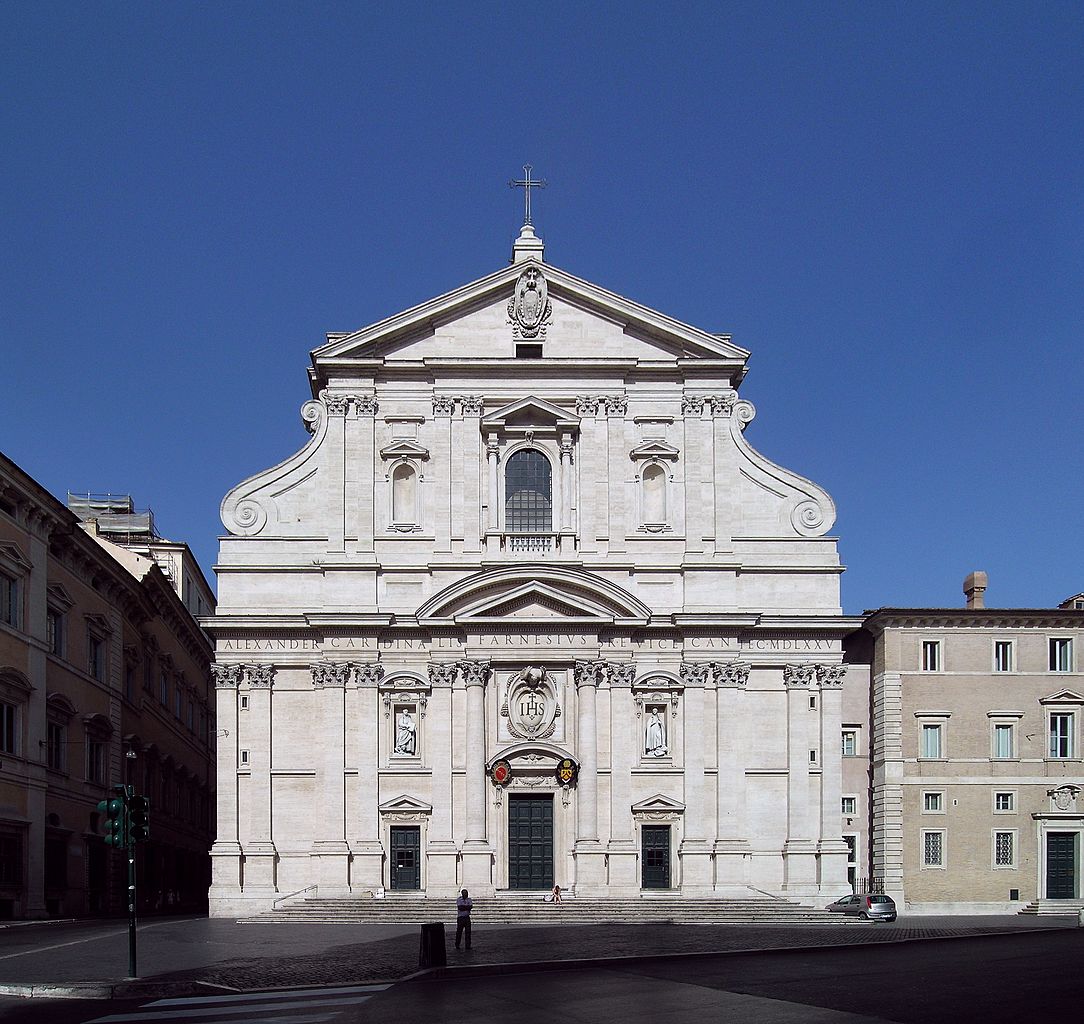
Church of the Gesù in Rome, ©Alessio Damato
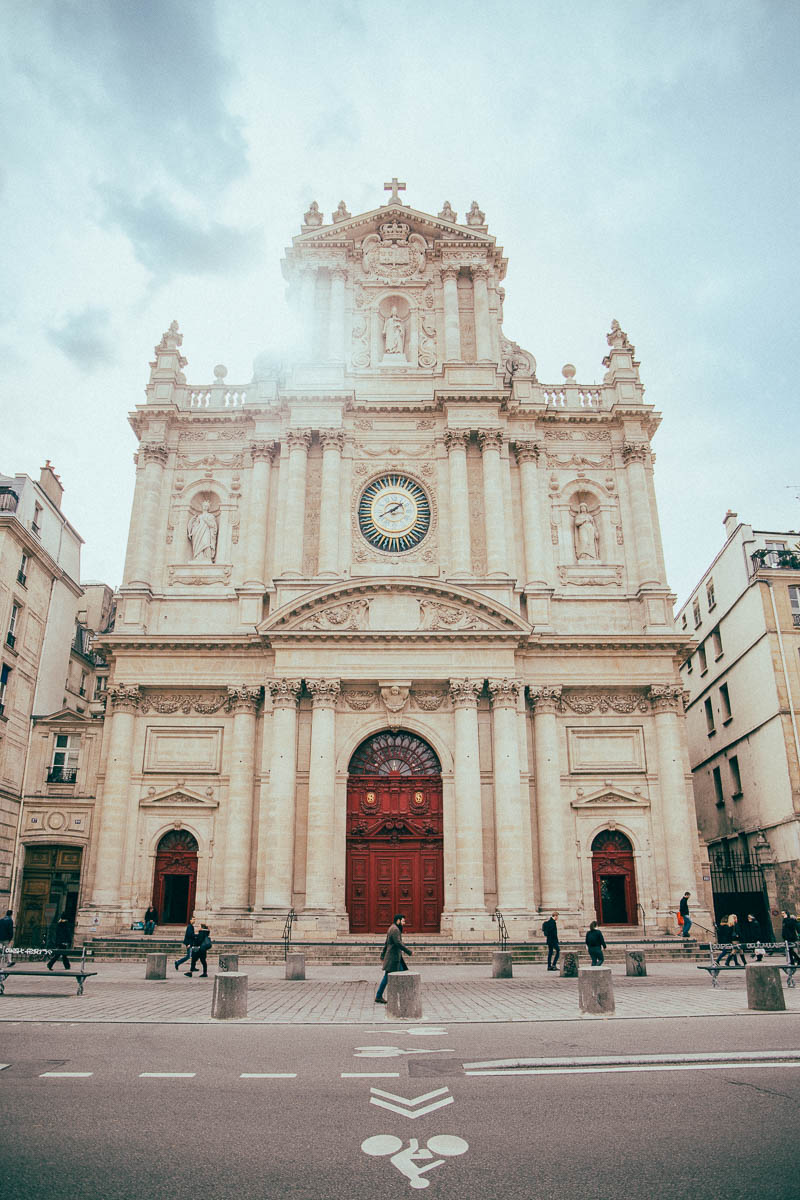
Church of Saint-Louis-Saint-Paul in Paris, ©Anaïs Costet
The inauguration took place in 1641: on Ascension Day, Cardinal Richelieu said the first mass there.
Placed under the patronage of Saint Louis, tutelary figure of the French monarchy, the church immediately became a very popular place: the entire aristocracy of the Marais flocked there to listen to the sermons of Bourdaloue or the musical pieces played on the large organs by Carpenter.
It is even said that on special days, you have to have your servants reserve your place from five in the morning to be sure of being able to enter!
The power of the “Company of Jesus” was affirmed (let us recall for the record that the kings, from Henry IV to Louis XV, chose their confessor among the Jesuits); in fact, the "house" of the Marais expanded (the convent buildings are the current Charlemagne high school) and the church received, over time, sumptuous decoration: sculptures, paintings, works of art, high altar – exceptional pieces which we will have the opportunity to discuss with you soon.
For today, we will “simply” present to you two major works, which disappeared in incredible circumstances: the monuments of the embalmed hearts of Louis XIII and Louis XIV.
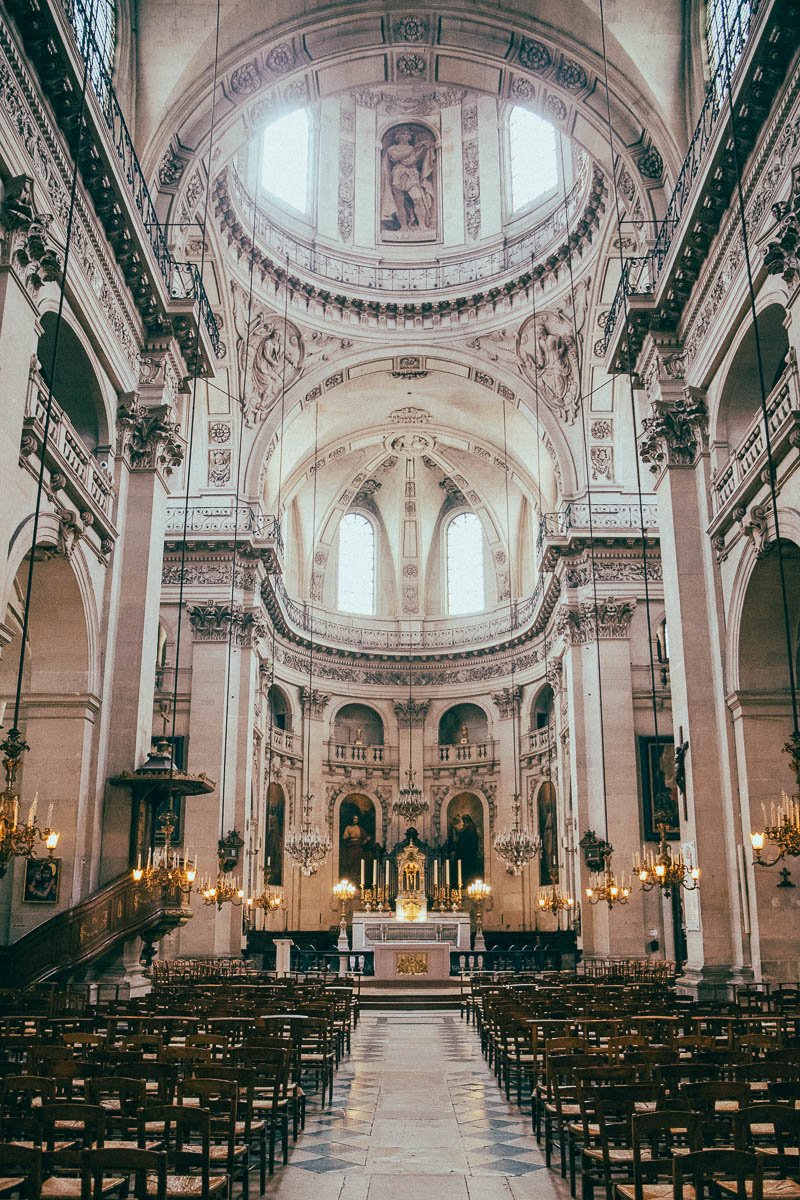
Nave of the church of Saint-Louis-Saint-Paul, ©Anaïs Costet
Respectively placed to the left and right of the choir, suspended from the vault of the first side arcades, these two monuments are quite similar.
That of Louis XIII is composed of two angels in silver and vermeil holding in their hands a heart-shaped urn and a crown. Wanted by Anne of Austria, the work was created by Jacques Sarrazin in 1643.
For Louis Here again, two silver angels support a crowned heart.
These two masterful pieces of goldwork unfortunately disappeared under the Empire. Melted, they are used to make the statue of The peace by Chaudet, now on display at the Louvre Museum.
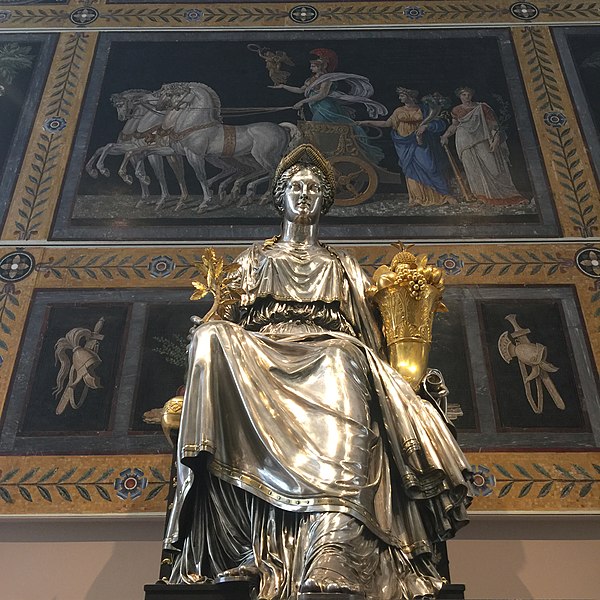
The fate of the hearts they contained, however, is more complex and more frightening. Like the bodies and royal hearts of Saint-Denis or Val-de-Grâce, these were extirpated from their urns during the Revolution.
The architect Petit-Radel who is in charge of the work at Saint-Louis-des-Jésuites is accompanied in his mission by two painters: Drolling and Saint-Martin.
It is the latter who, in secret, and after paying Petit-Radel, seizes the two embalmed hearts for… “artistic” purposes.
Indeed, in the XNUMXth century, painters got into the habit of using “mummie”, a substance originating from the Orient, obtained by the maceration of mummified organic fragments (hence its name, derived from “mummy” ), herbs, alcohol etc.
This mummie, imported, is very expensive, so much so that painters try to compose it themselves in their workshops. It must be said that the substance, mixed with oil, has no equal, it is said, for rendering extremely brilliant deep browns on the canvas.
Saint-Martin, by recovering these exceptional viscera, undoubtedly hopes to obtain colors that will be just as exceptional: in the months that follow, he therefore cuts out the heart of Louis XIV...
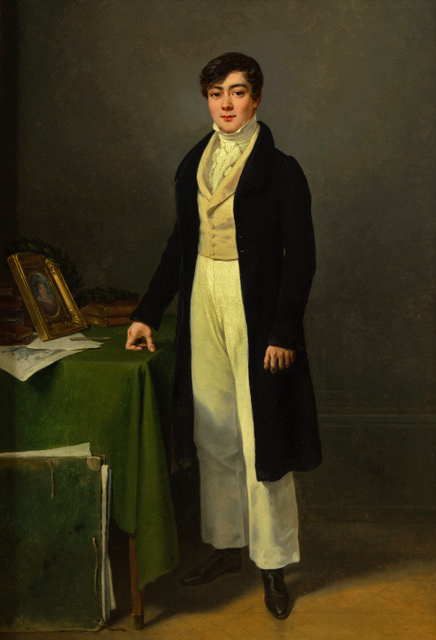
But the Revolution ends, as does the Empire, and the Bourbons regain their crown with the Restoration.
Seized with remorse it seems, Saint-Martin approaches the throne and offers, against payment all the same, to return to the sovereign the barely “opened” heart of the Sun King then that of Louis XIII, apparently intact (the versions differ on this point).
Louis XVIII accepts and, grateful, offers the painter a gold snuffbox for this double restitution (the royal viscera found will later head to Saint-Denis).
Finally, let's take a brief look at Drolling, who accompanied Petit-Radel and Saint-Martin to Saint-Louis-des-Jésuites.
Although it seems, despite the friendship between the two painters, he never used the hearts of Louis XIII and Louis Grace.
So, if you one day see one of his paintings in a museum and you begin to admire the famous “chiaroscuro” of his compositions, also remember that there is in there, mixed with color but invisible to the eye, a few pieces of the entrails of Anne of Austria, Maria Theresa, the Regent and a few others...
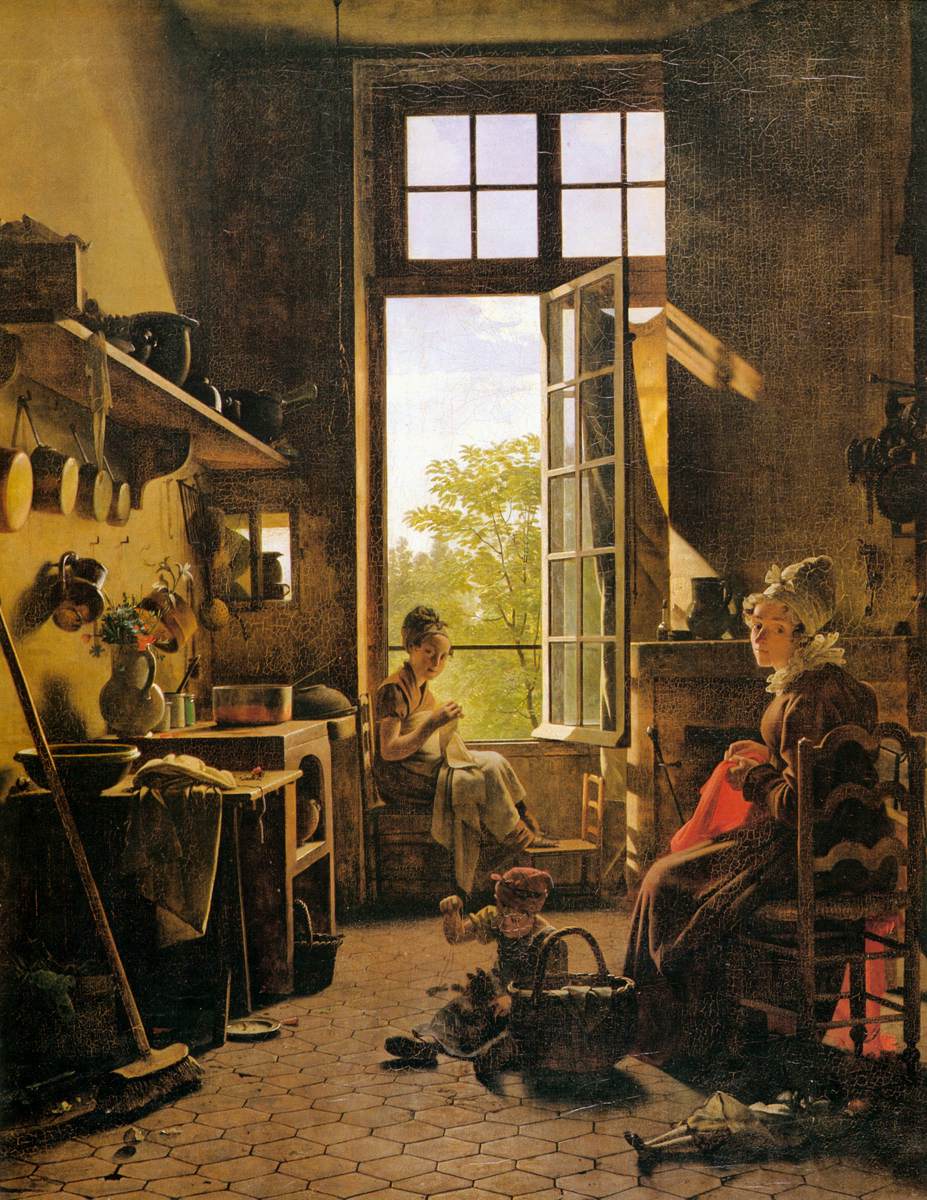
Saint-Paul-Saint-Louis Church
99 Rue St. Antoine, 75004 Paris
FOR PASSIONATES OFUS
Juliette Drouet actress, muse and mistress of Victor Hugo
At 14 rue Sainte-Anastase, from 1836 to 45 and at 12 from 1845 to 48, a few hundred meters from Place des Vosges, lived the muse and lover of Victor Hugo, Juliette Drouet née Julienne Gauvain.
Rue Vieille-du-Temple: the fabulous construction site restarts
A luxury hotel will be created at the end of the work. On the ground floor, the old stables and carriage houses will house the restaurant on the large courtyard, while the first courtyard, on rue Vieille-du-Temple, will feature two businesses continuing its 19th century layout.
The Marais festival, a fabulous story
The Festival du Marais dates back to a time that those under 60 cannot know. However, this leading artistic event was for a long time one of the most popular cultural events in the capital. For a quarter of a century, from 1962 to 1987, this unique festival…
NOW ON THE MOOD MARSH
The best tattoo parlors in Marais
Tattooing, an age-old practice, has long been the prerogative of convicts, dock workers, the underworld and sailors. Although it has become democratized, now affecting all profiles and concerning one in five French people, including 16% women compared to 10% men, it still remains taboo due to its definitive and transgressive nature.
Juliette Drouet actress, muse and mistress of Victor Hugo
At 14 rue Sainte-Anastase, from 1836 to 45 and at 12 from 1845 to 48, a few hundred meters from Place des Vosges, lived the muse and lover of Victor Hugo, Juliette Drouet née Julienne Gauvain.
Piccola Mia, the pizzas of the Republic
On the Place de la République, a brasserie with Italian accents has just opened, which quickly made people forget the old Pizza Pino. Welcome to Piccola Mia, the fruit of the joyful encounter between Italian chef Denny Imbroisi, pizza chef Julien Serri and mixologist Matthias Giroud who creates a creative cocktail menu.

